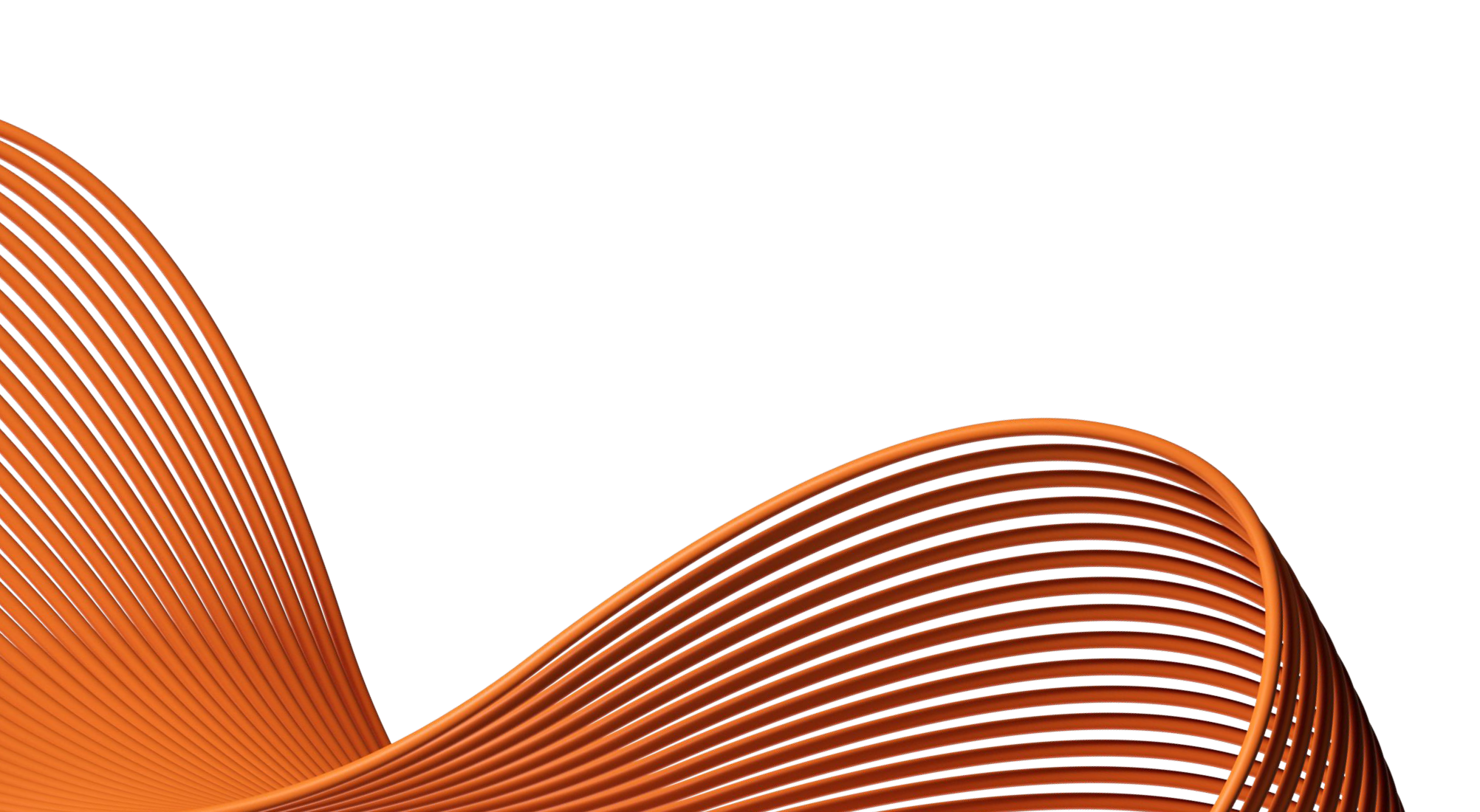- Our Products
- Upper Extremity
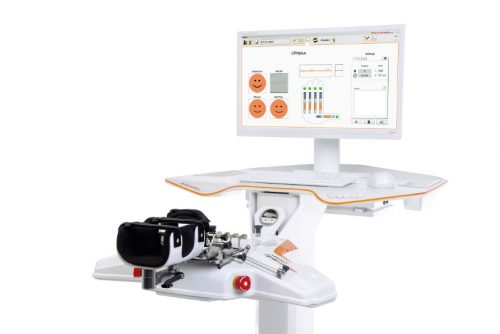 Amadeo Finger-Hand-Rehabilitation
Amadeo Finger-Hand-Rehabilitation
Amadeo is giving hands back their grip and fingers their finesse. Patients who are barely able or unable to grasp can perform hundreds of robot-assisted grasping movements. It won’t train a new Mozart. But it will help patients return to the piano, handwriting Christmas cards, and grabbing life firmly by the horns.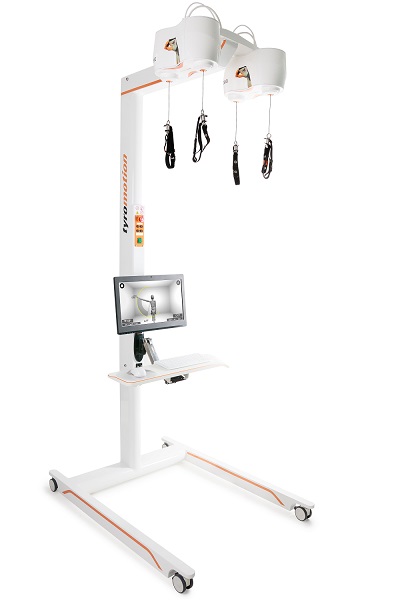 DiegoShoulder-Arm-Rehabiliation
DiegoShoulder-Arm-Rehabiliation
Diego is designed to strengthen what’s important. Whether proximal or distal training, Diego purposefully supports the rehabilitation of natural motion, allows the handling of everyday objects to be relearned, and is usable by adults and children alike.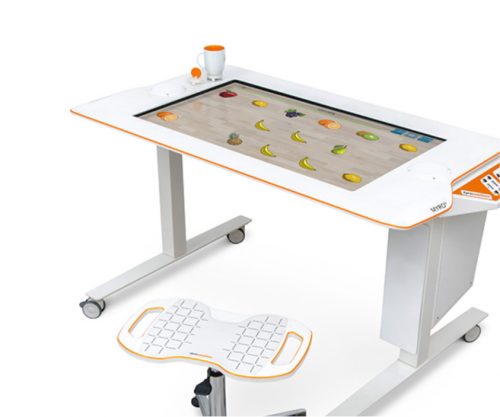 Myro Interactive and task-specific therapy
Myro Interactive and task-specific therapy
Myro is made for making humans get better! The sensor-based surface enables task-oriented rehabilitation with real objects, trains the patient’s cognitive abilities, and improves motor abilities of the upper extremity.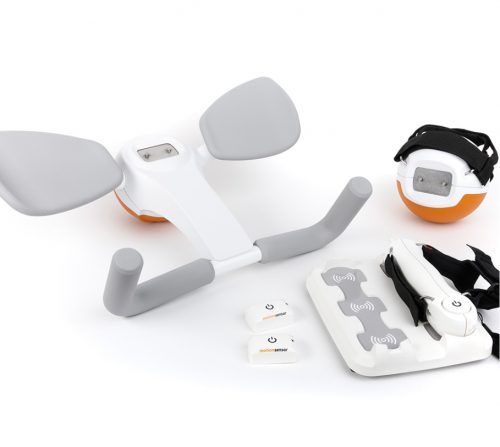 Pablo Upper Extremity Rehabilitation
Pablo Upper Extremity Rehabilitation
As a multifunctional rehabilitation device with comprehensive accessories, Pablo enhances classical therapy exercises with biofeedback, objective assessments, and gamification. It won´t train the next Picasso. But it will help patients to take back control of their lives.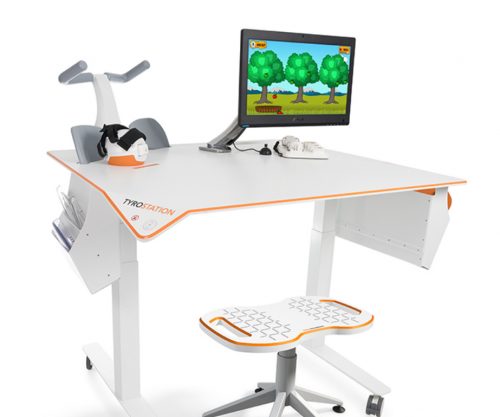 Tyrostation The perfect therapy setting
Tyrostation The perfect therapy setting
The Tyrostation is home to all components of Pablo and Tymo and provides ergonomic adaptability for patients. Sometimes, it´s about the little things in life – or therapy.
- Lower Extremity
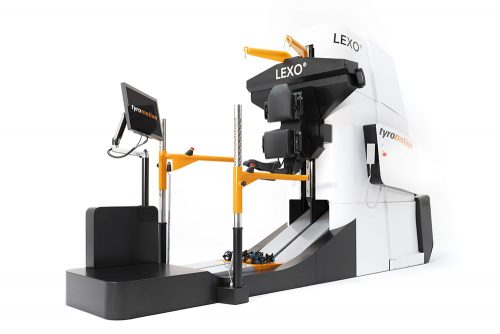 LexoGait and Locomotion
LexoGait and Locomotion
Lexo is a revolutionary gait trainer and impresses with fast setup, high patient activity and optimal trunk support. It encourages active participation and enables therapists to focus fully on their patients.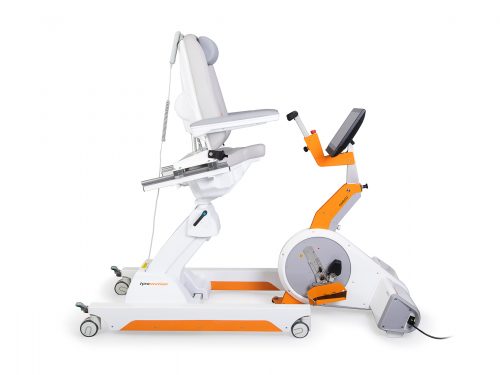 Omego Plus Gait training for the goals across all phases
Omego Plus Gait training for the goals across all phases
More than just a therapy bike! Omego Plus combines uni- and bilateral leg training, leg press, stepper, cycling & foot lift training in one device. Stride stronger with Omego Plus!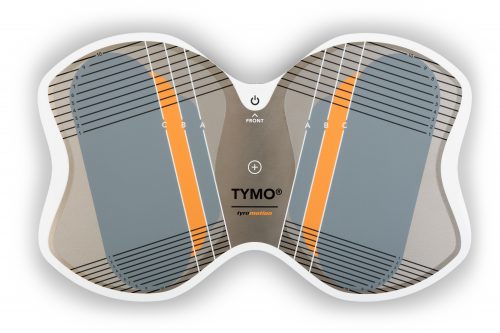 Tymo Balance training and postural control
Tymo Balance training and postural control
Small but powerful! Tymo is a versatile measurement and therapy system for the whole body. In addition to the standing position, Tymo offers a wide range of options for maximum variety during therapy.
- MTT-Line
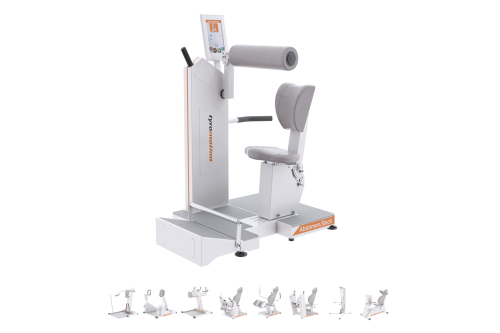 MTT-LineMedical training therapy
MTT-LineMedical training therapy
Get back in the game with the MTT-Line! The Medical Training Therapy devices are specifically designed to strengthen the six major muscle groups of the human body. Barrier free and maximum adjustability make the devices accessible for all types of patients.
- Software
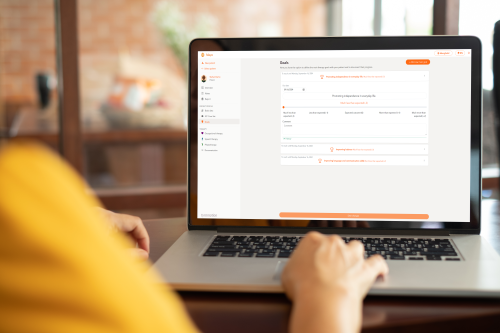 Maya Therapy Platform
Maya Therapy Platform
Maya reduces paperwork, standardizes documentation, and automates reporting, making administration effortless and efficient. Designed for therapists to work wonders!
- Upper Extremity
Health
Rehabilitation
Stroke – How does rehabilitation work and how much recovery is possible?
25. October 2021 ● 4 min. Reading time
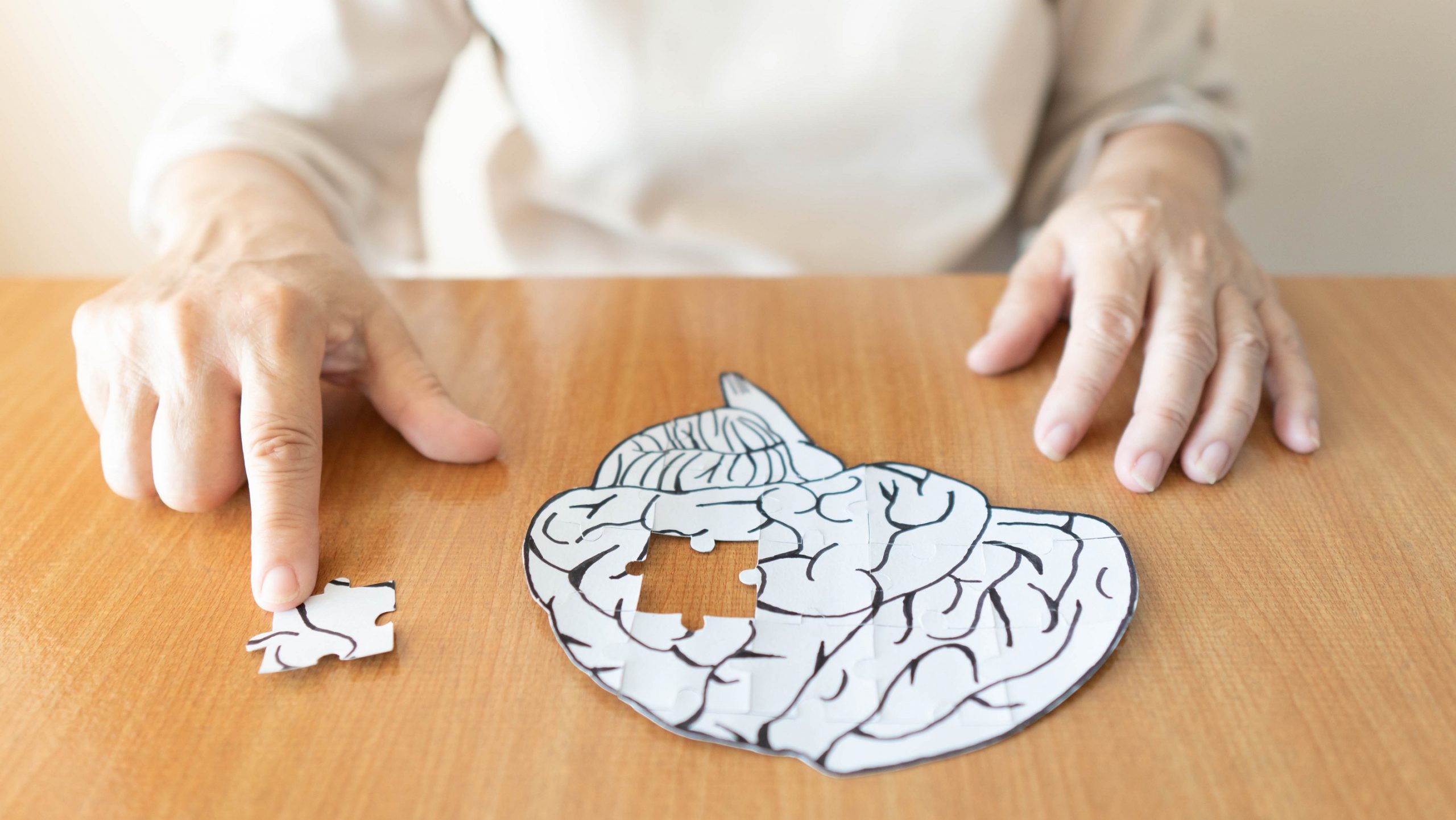
Symptoms, treatment, and rehabilitation after a stroke
The symptoms described by Peter are typical for the sudden onset of a stroke. Common first symptoms of a stroke are a flaccid paralysis of one half of the body and loss of the ability to speak. In addition to paralysis, patients may experience so-called neuropsychological disorders as a result of the stroke. This may include, for example, being able to only perceive one half of a room or being unable to plan sequential actions correctly.
To ensure a good prognosis for the condition, immediate attention is paramount.
Peter’s family did exactly what they were supposed to do. They administered first aid by bringing him into a safe position and calling an ambulance. Twenty minutes later, he was at the hospital and received emergency care.
The chances of surviving a stroke are much higher if the patient receives medical attention within one hour of the stroke happening.
Causes of a stroke
The most common cause of a stroke is impaired circulation in the brain, which causes a localized deficit of oxygen and nutrients. In turn, this deficit leads to damage and death of brain tissue.
Another cause of strokes is cerebral haemorrhage. If a vessel bursts, blood seeps into the adjacent brain tissue, causing the death of nerve cells.
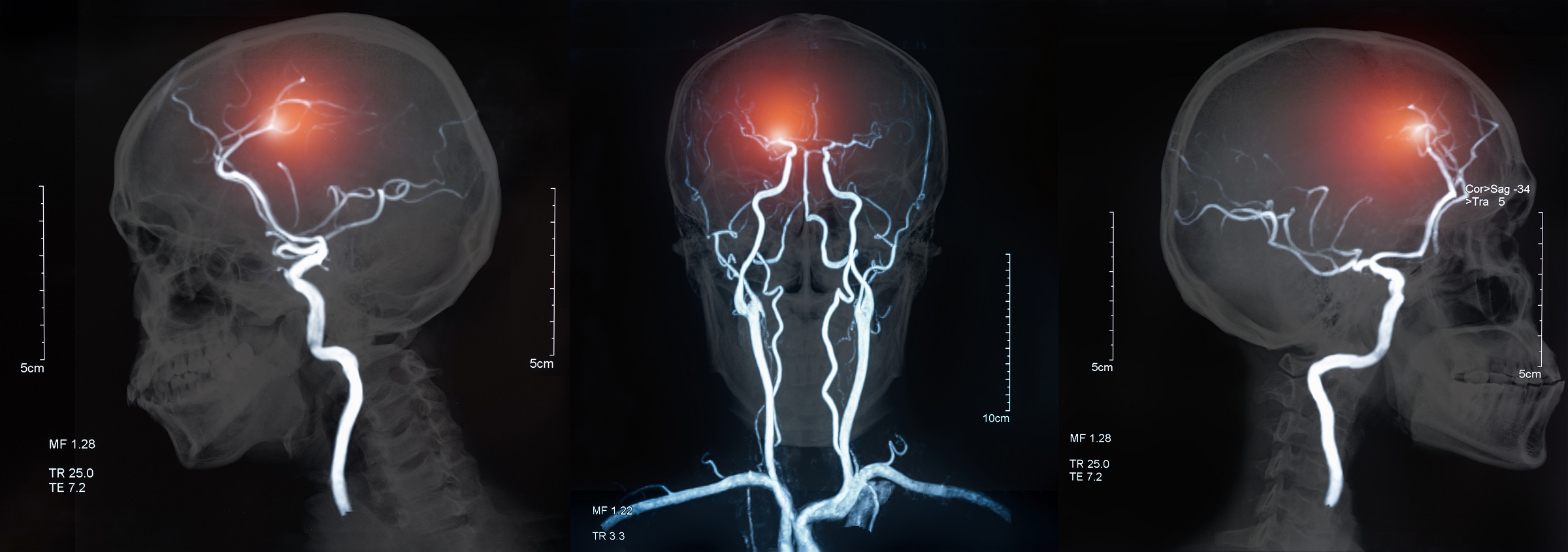
The good news is that the brain begins to heal itself as early as two days after the stroke. The dead tissue is removed. The brain starts to regenerate.
In time, other areas of the brain can take over the functions of damaged areas. When spontaneous healing is complete, typically after a few months, much of the remaining recovery depends on type and intensity of rehabilitation.
Recovery from a stroke
Our brain is a mysterious and wonderful organ. Neuroscientists have already succeeded in revealing many of its secrets but some things are still a mystery. One important feature of the brain is well known: its plasticity.
Plasticity is the brain’s ability to modify its structure and function. Studies have shown that this ability is not lost even after a stroke.
Every therapist is aware of neuroplasticity and uses it as the driving force of therapy work with patients. Regular practice of functional tasks and the resulting repeated brain stimulation allow the patient to re-learn abilities such as speech, movement and cognition.
Early rehabilitation after a stroke
Often, before a stroke survivor can perform independent exercises, help and support from trained caregivers and therapists are needed. Optimal care is ensured in specialized facilities for physical, occupational, and speech rehabilitation.
Peter remembers how difficult it was for him and his caregivers when he attempted to sit on the edge of the bed in the intensive care unit for the first time. Various tubes and cables were still attached to many parts of his body. He continuously felt like his strength could fail him at any time. The support of his therapists and the encouragement of his wife motivated him to keep going.
If a patient can sit in a wheelchair for three hours a day and is able to concentrate during therapy sessions, it is time to begin a rehabilitation program. Then the search for the right rehabilitation facility starts, often with the help of a social worker or a case manager. Contact your insurance provider to obtain a list of facilities that are covered.
Therapy in a rehabilitation center
Following a stroke, a rehabilitation center offers the chance to regain mobility and cognitive function in a protected environment. Doctors and therapists work with stroke patients to achieve their goals. They identify the main symptoms that are causing the limitations and prepare a therapy plan consisting of coordinated rehabilitation measures.
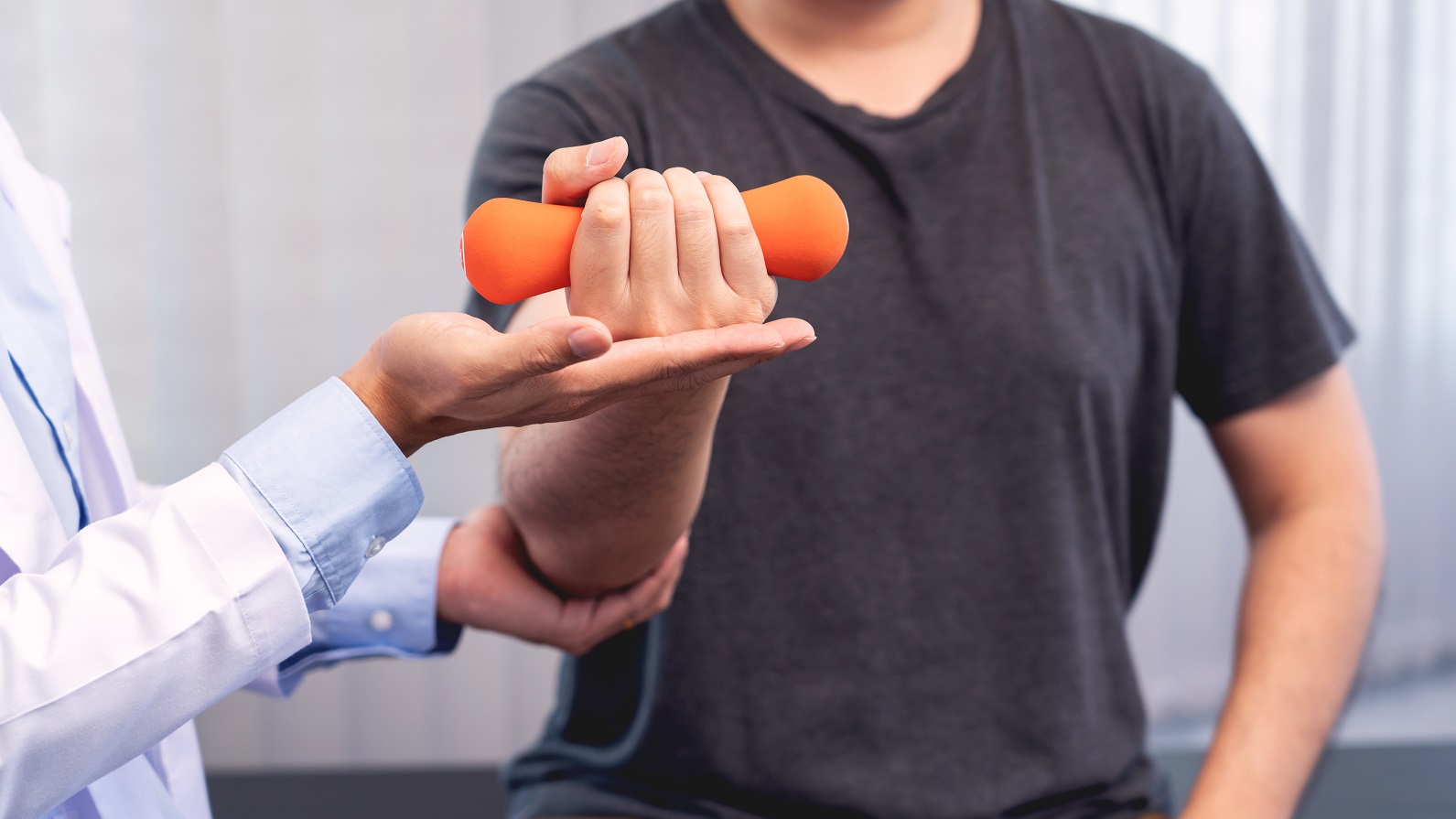
A common symptom of stroke is paralysis. When beginning with rehabilitation, it might be that an arm and/or leg cannot be voluntarily moved. The muscles in an extremity may become tight after some weeks and months, making the joint stiff and difficult to move. This stiffness, or spasticity, can be mild to severe. Severe spasticity or immobility may result in joint contractures, or rigidity.
There are several methods to treat a so-called hemiparesis, irrespective of whether the extremity is flaccid or spastic. Physicians and therapists work together with their patients to develop customized and individual treatment plans based on evidence-based practice and therapy techniques.
Outpatient rehabilitation
Rehabilitation following a stroke is a long process and many patients will still require care a year later.
Peter is still attending therapy sessions two years after his stroke. His next goal is being able to load and unload the washing machine and the dishwasher by himself. These accomplishments will help him relieve his wife´s workload at home and be more independent.
Like Peter, many stroke patients find new goals they strive to achieve. After a stay in a rehabilitation center, outpatient therapy helps to progress independence, reduce long-term impacts of the stroke, and teach patients to live with permanent limitation.
Therapeutic appliances for everyday life
Today, after two years, Peter is looking forward to going to his favorite café by himself again. He has a trusted companion, a walking stick.
In the mornings and evenings, he needs his wife to help him with personal hygiene and dressing. Before she heads off for work, she also puts out some tools that help him with daily tasks. His favorite tool is a reacher which gives him greater independence and safety by decreasing the amount that he needs to bend down to reach objects from the floor.
Such tools can make everyday life a lot easier. Therapists and orthopedic technicians can provide advice regarding suitable aids and devices. Occupational therapists can also support independence in daily routines.
Peter’s story is a possible, but fictitious, example of stroke recovery. It is not a linear path to recovery and everyone’s journey is different.
Author: Hannes Aftenberger
You might also be interested in
4. April 2023
Health
Rehabilitation
Stroke nutrition guidelines for optimal health
Nutrition as the key part in health and well-being of stroke survivors A healthy, balanced …
21. March 2023
Rehabilitation
Kinesio taping in neurology as a useful therapy supplement
The Kinesio tape and its usefulness in neurological therapy What was originally known only from …
7. March 2023
Rehabilitation
Exercises against freezing of gait in Parkinson’s disease
When the legs freeze – how does the symptom “Freezing of Gait” manifest itself? Parkinson’s …



 Contact
Contact 

 Contact
Contact 